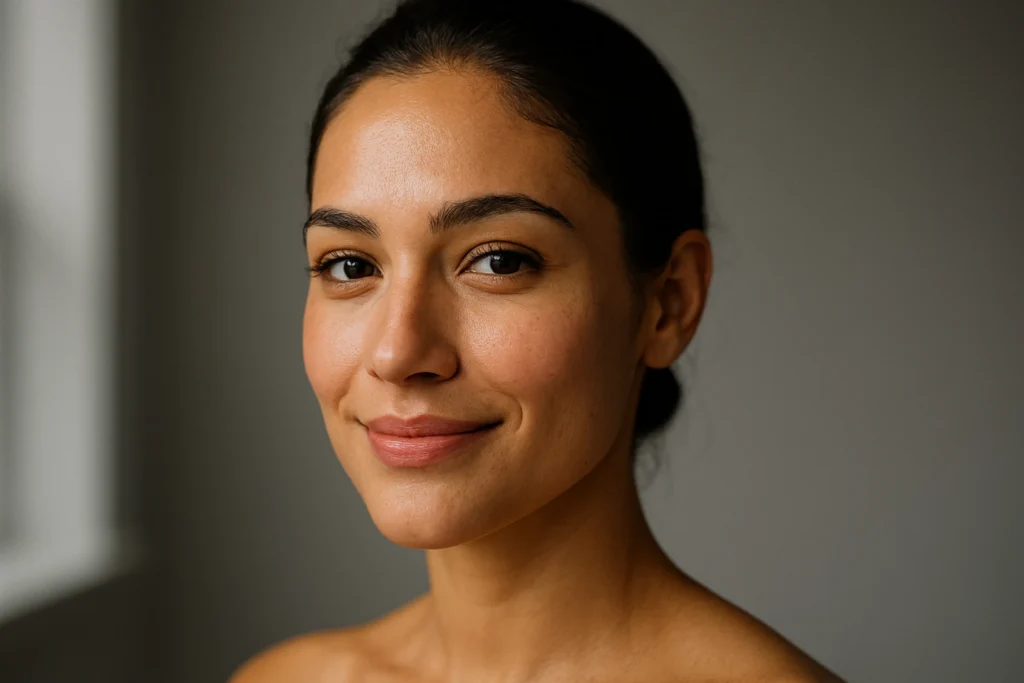Resurfacing facial treatments have revolutionized the field of medical aesthetics. Non-invasive and minimally-invasive treatments effectively treat the marks of aging, photodamage, irregular texture, and atrophy. Whether you need one of the best resurfacing face treatments or something else, this article will dissect your decision, its benefits, and how to select the best face resurfacing treatment for you and your skin.
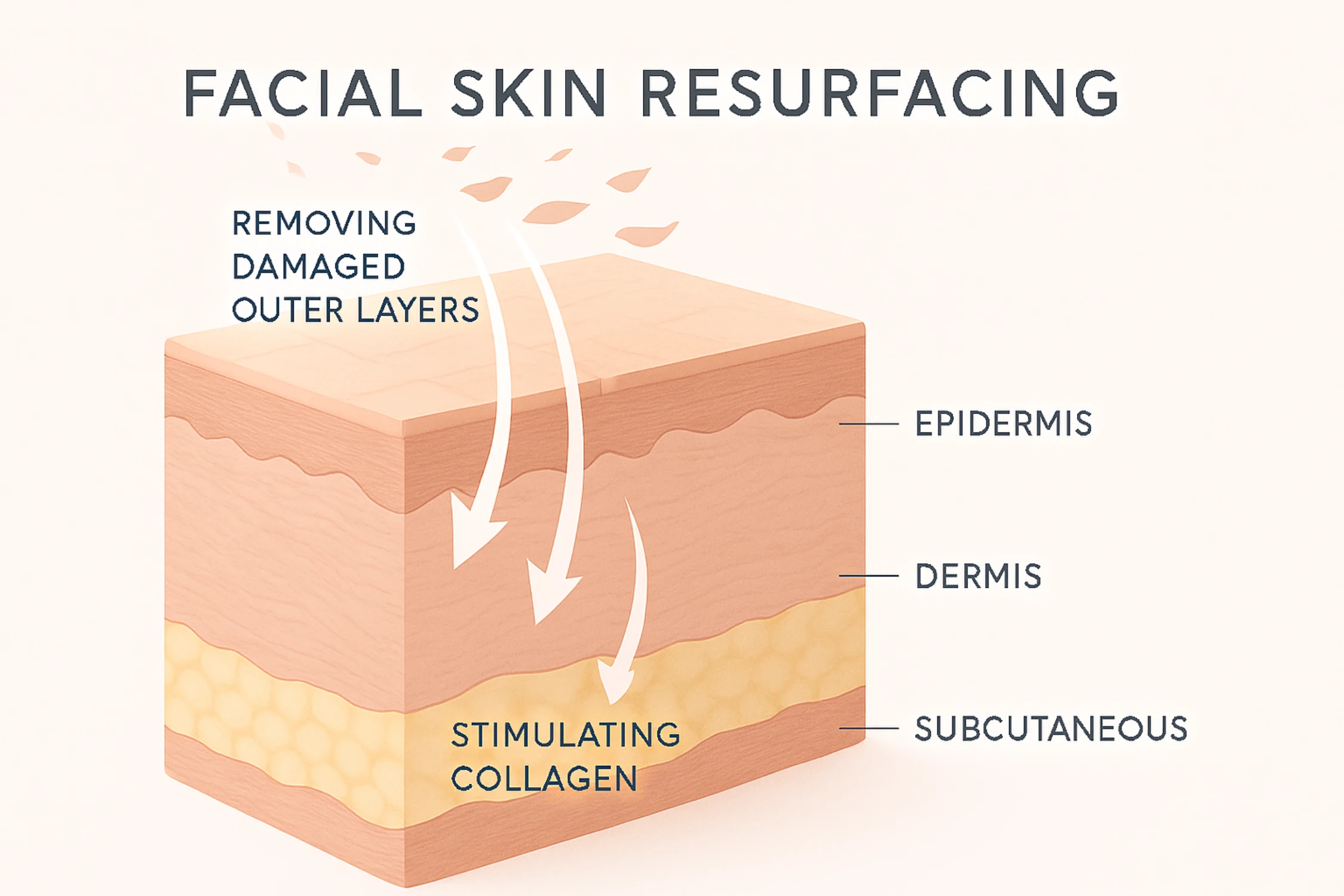
What is Skin Resurfacing?
Skin resurfacing is a procedure in which the layers of skin surrounding and covering the area of concern are removed, smoothing out the area. The outer damaged layers of skin are peeled away to stimulate collagen growth. Removing all basic imperfections of the skin, from wrinkles and lines to scarring and acne pigmentation, the treatment smooths out skin texture, tone, and color.
Laser, microneedling, and peels all have the same impact on skin, causing cell turnover to reveal the healthier, more radiant skin beneath. Resurfacing later tightens up skin elasticity, smoothes out irregularities, and causes youthful glow. Surgical or minimally invasive, they carry the advantage of being able to instantly revive skin life and produce noticeable as well as enduring effects if followed by diligent skincare maintenance.
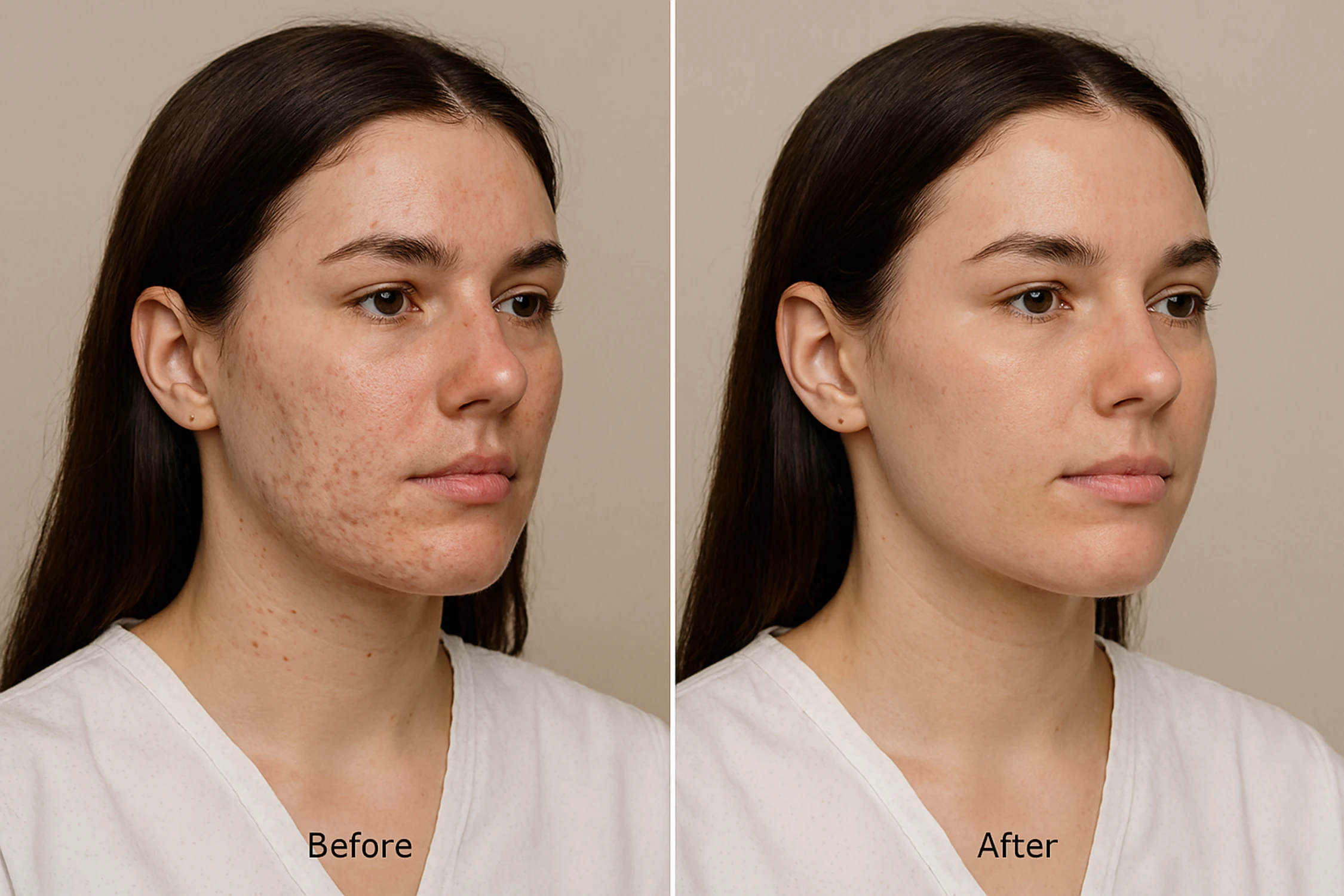
The Advantages of Face Resurfacing Treatments
Skin resurfacing treatments promote collagen production and new skin turnover. It refines your skin texture, disturbing the roughness, bumps, and uneven skin surfaces for a polished look. Some of its main advantages are:
- Smoother Skin: Sloughs off dead skin cells and encourages cell turnover for a refreshed surface.
- Increases Collagen & Elastin Secretion: Improves skin firmness and elasticity, minimizing sagging in the long run.
- Minimizes Fine Lines & Wrinkles: Dulls the appearance of wrinkles and fine lines for a youthful glow.
- Fades Acne Scars & Pigmentation: Helps even out skin tone and reduce discoloration, sun spots, and blemishes.
- Reduces Pore Size: Helps to tighten and shrink large pores, giving the skin a smoother look.
- Boosts Hydration & Product Absorption: Enables skincare products to permeate deeper for better results.
- Non-Invasive with Little Downtime: Most procedures require very little or no downtime, making it easy for patients with busy schedules to get back to their lives.
- Long-Lasting Results: Resurfacing treatments can offer long-term results with proper skin care and maintenance.
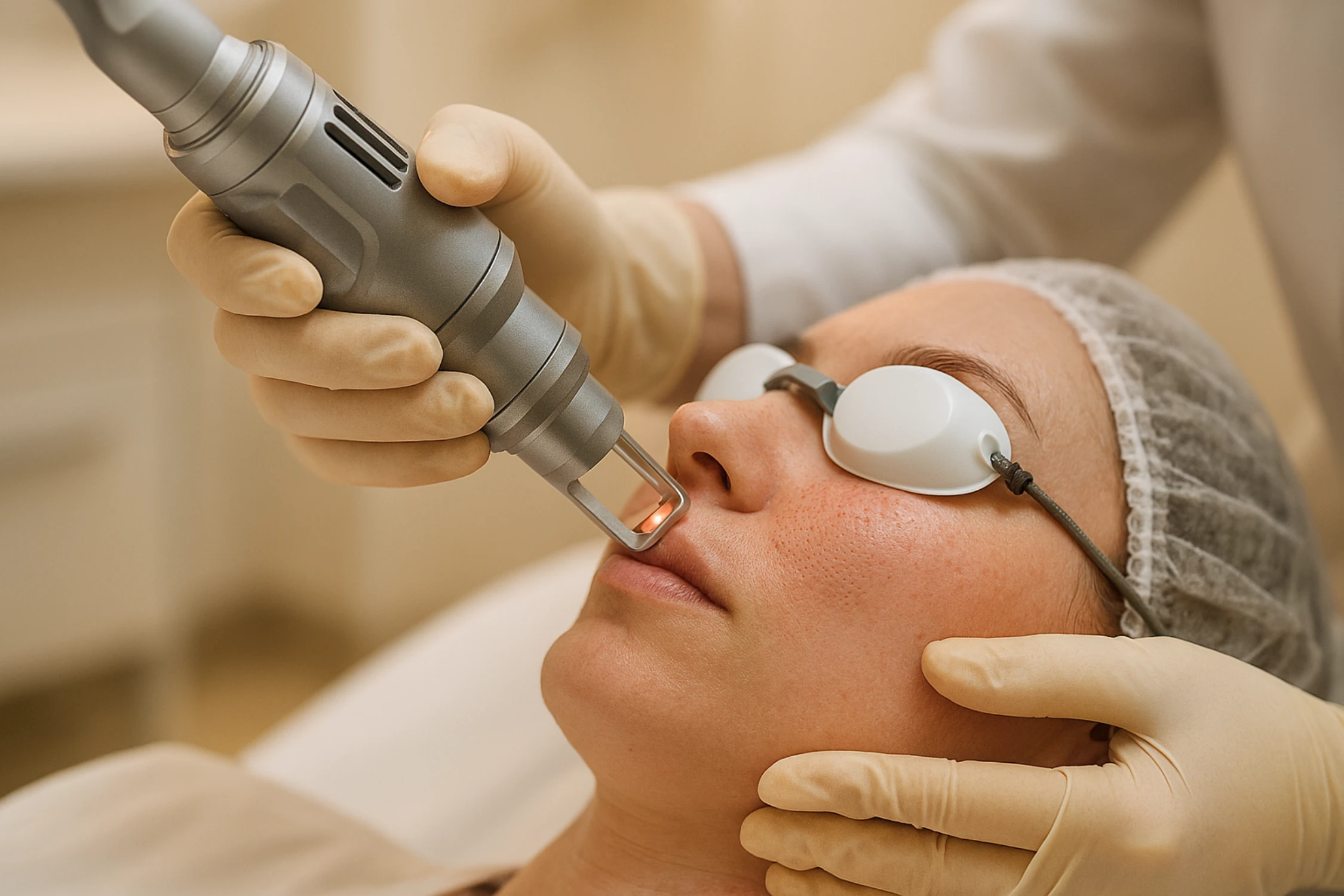
Best Face Resurfacing Treatments
Various skin resurfacing treatments exist, and each type is suitable for a particular skin concern and type. Here are the best options:
- Laser Skin Resurfacing
Laser treatments are one of the best skin resurfacing treatment types that work best for deep wrinkles, scars, and hyperpigmentation. There are two major types of laser resurfacing:
-
- Ablative Lasers: Lasers such as CO2 and Erbium lasers that ablate the outer layer of skin and stimulate collagen production. They yield dramatic results but involve more downtime.
- Non-Ablative Lasers: Treatments like Fraxel use waves of heat to penetrate beneath the surface of the skin to stimulate collagen production without damaging the surface, leading to little downtime.
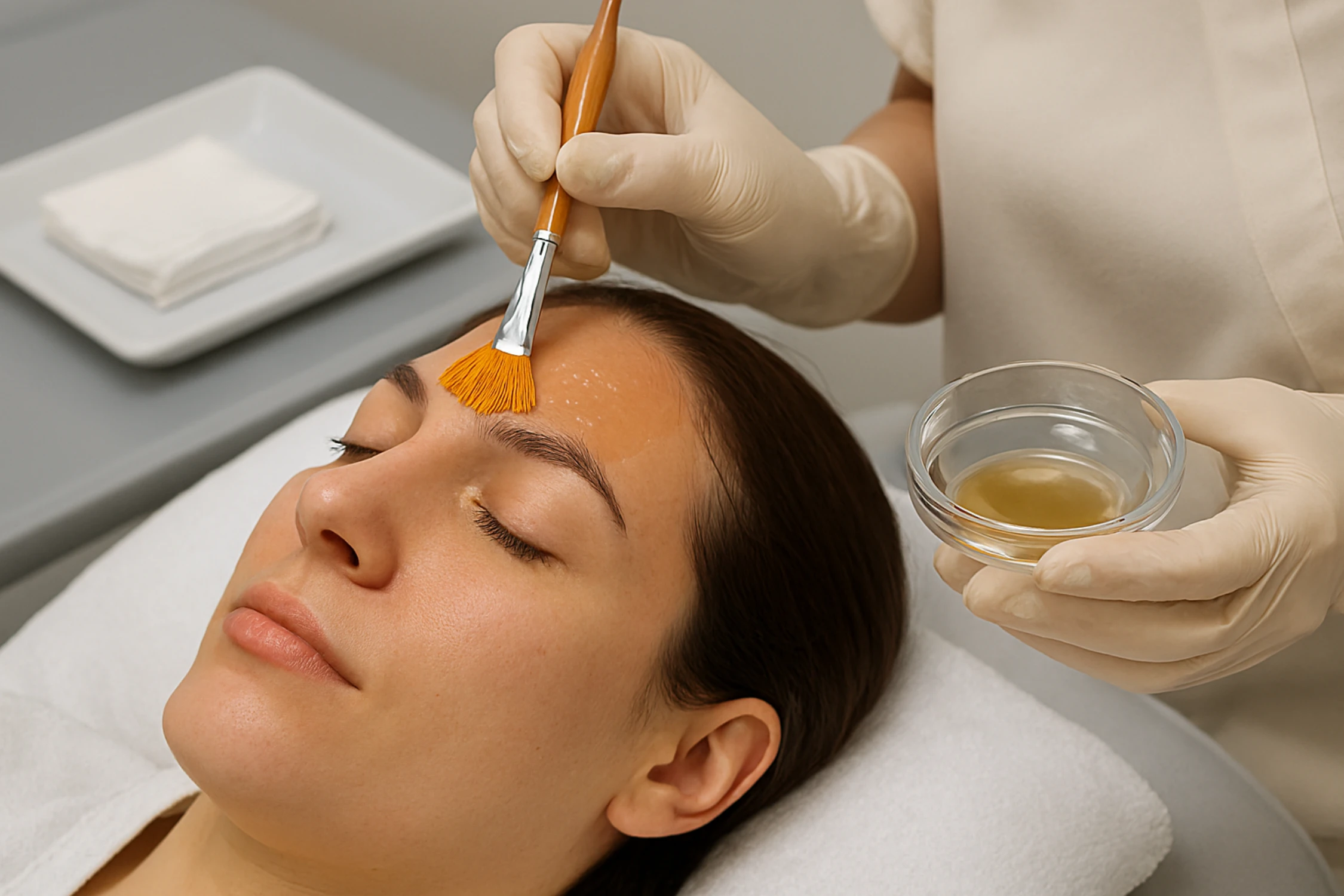
- Chemical Peels
Chemical peels are acidic (such as glycolic, lactic, or salicylic acid) solutions that are placed only on the surface skin layers to peel and stimulate new, healthy skin growth. The peels are superficial, medium-depth, or deep, depending on their power.
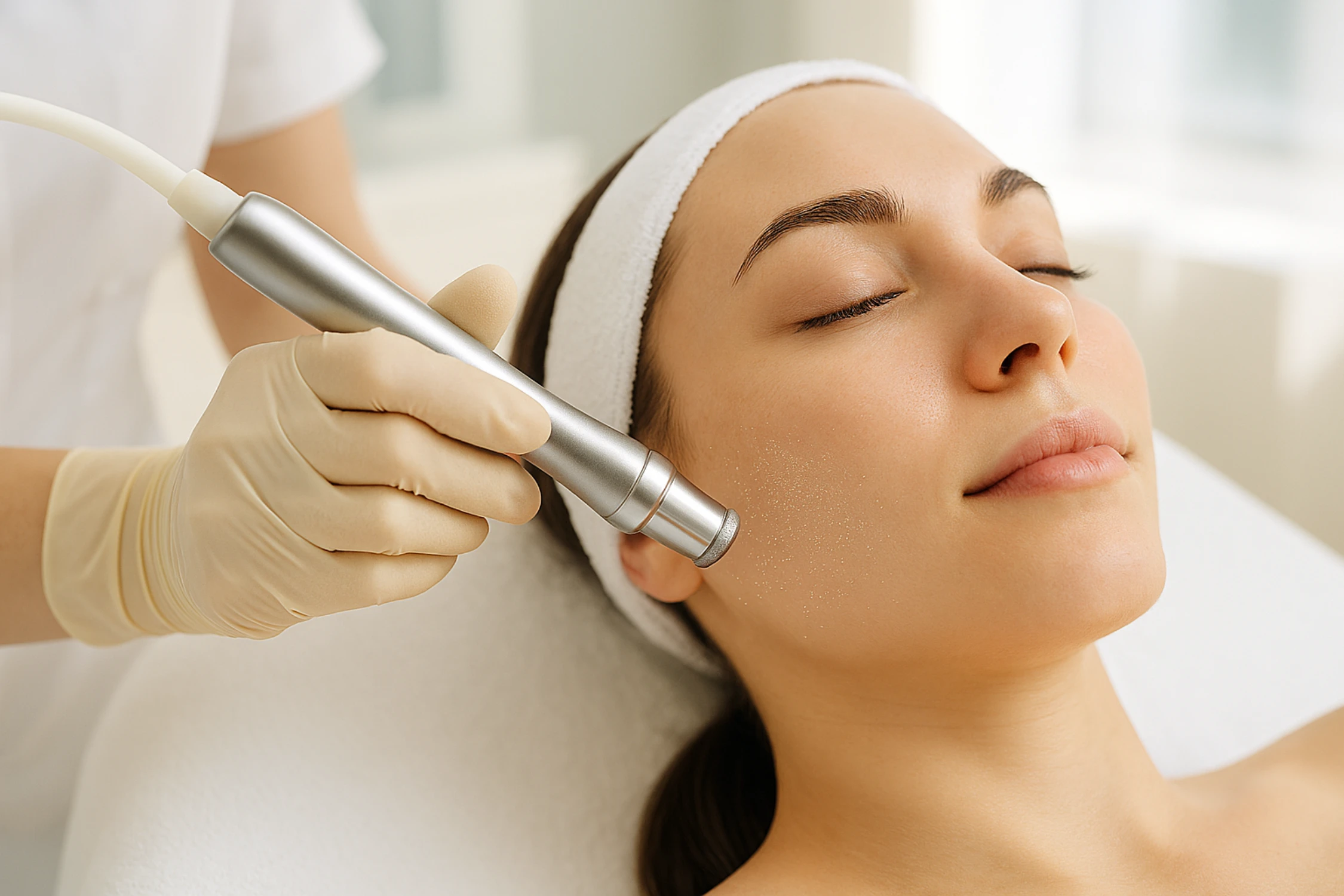
- Microdermabrasion
Microdermabrasion is a less invasive way to exfoliate the skin, removing dead skin cells to create a smoother and brighter appearance. This is great for those who want gentle resurfacing with no downtime.
- Radio-Frequency
Radio frequency skin tightening is a non-invasive method that uses energy waves to heat the deeper layers of the skin to promote the production of collagen and elastin. Not only is this treatment an incredible pairing post-resurfacing, but it builds up skin over time, improving firmness and texture.

- Microneedling
The science behind microneedling is that it creates controlled micro-injuries in the skin while restoring heat in the deeper skin layers. Together, they promote collagen production, smooth out fine lines, and minimize acne scars with little downtime.
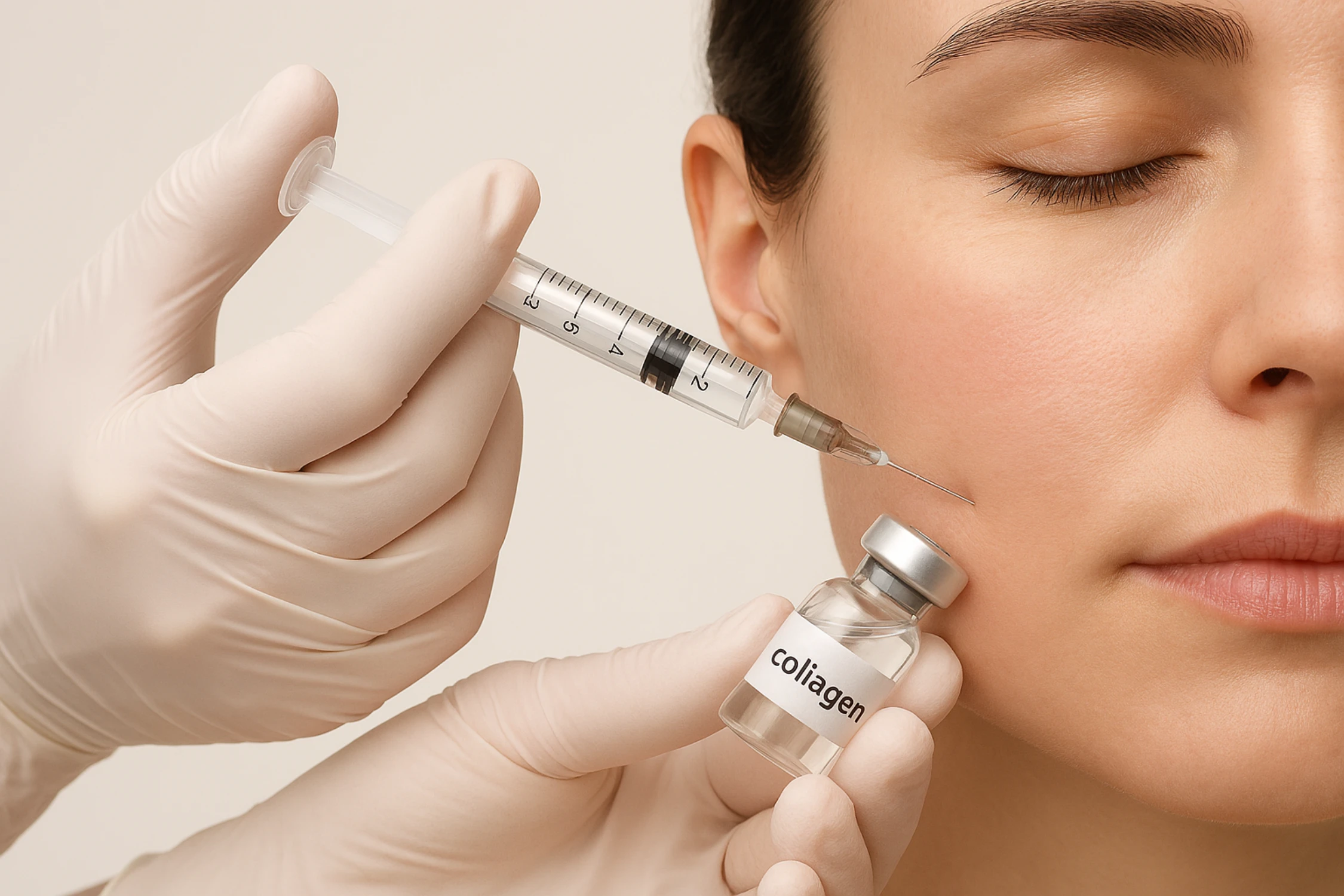
- Linerase Collagen Treatment
Linerase is a combination of regenerative skin treatments that renews the skin; specifically, Linerase is composed of collagen injections that are injected under the skin, activating the skin, renewing it, and enhancing its quality, elasticity, and freshness. As it prompts natural collagen creation, it helps with skin resurfacing and is an incredible choice for anybody who likes a more youthful beginning and a plumped appearance.
- Dermabrasion
Dermabrasion is a more aggressive resurfacing technique than microdermabrasion and removes the topmost layers of skin used to smooth out deep scars, wrinkles, and pigment.
How to Select the Best Face Resurfacing Treatment?
The best skin resurfacing treatment for you varies with numerous factors such as your skin type and concerns, downtime tolerance, and goal. While all the skin rejuvenation treatments aim to enhance skin texture, tone, and general health, some outshine others in repairing individual concerns. Knowing how various treatments target particular skin worries is the first step towards an informed choice.
Following is a breakdown of the best resurfacing treatments that target your specific skin issue:
- Fine Lines & Wrinkles
Collagen production slows as you age, leading to the appearance of fine lines and wrinkles. Skin resurfacing treatments that prompt the production of collagen and elastin can balance these aspects of aging.
-
- Laser Skin Resurfacing (CO2 & Erbium Lasers) 10: Replace 2 or 3 of the outer scarred skin with ablative lasers, which will also vaporise or heat the deeper dermis in a way to stimulate the elastin and collagen formation, promoting tighter vanish skins.
- Chemical Peel (Deep Peels): Vitamin A (TCA) or phenol peels penetrate and last longer than those for the superficial layers. In addition to smoothing fine arcs, they also enhance the skin.
- Radiofrequency (RF) Microneedling: This extends the microneedling benefits, combining it with radiofrequency energy to promote collagen and firm skin and reduce fine lines, minimally.
2. Acne Scars & Bumps
Skin irregularities, scars from acne, and skin problems require skin resurfacing and cell-proliferation stimulating treatments. These are the best options:
-
- CO2 Laser Resurfacing: This is an invasive technique that vaporizes superficial layers of skin, inducing collagen synthesis. It works best on deep acne scars and pitted skin.
- Microneedling (Collagen Induction Therapy): It is a cosmetic procedure in which small needles are used to produce collagen—it creates small wounds (cannot be seen by bare eyes) on the skin to minimize mild to moderate acne scars over time.
- Dermabrasion
This procedure, used for deeper resurfacing, physically scrapes away the top layer of skin with a smooth rotating instrument. It is the most suitable for deep acne scars and rough surfaces.
- Hyperpigmentation & Uneven Skin Tone
Dark spots and uneven skin tone are caused by sun damage, melasma, and post-inflammatory hyperpigmentation (PIH). The treatments that have the most success are those that do two things that work together: treating the pigmentation and encouraging skin turnover:
-
- Chemical Peels (Glycolic, Lactic, or TCA Peels): Both slough off discolored surface layers of skin and encourage the growth of new, evenly pigmented skin.
- Non-Ablative (Fraxel, PicoSure) Laser Treatments: Delivery of heat energy that goes deeper into the skin without harming the surface of the skin, and working to simultaneously break up pigments as well as stimulate collagen formation.
- Linerase collagen therapy: Promotes collagen regeneration, improves tone/elasticity of skin in layers, adds glow to skin; great for pigmentation.
- Skin Tightening & Elasticity Loss
As skin ages, it starts to lose firmness and elasticity, leading to sagging and a more well-established facial structure. These resurfacing treatments help to tighten and lift your skin:
-
- Radiofrequency (RF) skin tightening: This delivers heat energy to help stimulate collagen and elastin production to improve skin laxity and texture over time.
- RF Microneedling: A hybrid of microneedling and radiofrequency energy, it tightens skin in addition to treating fine lines and scars.
- Linerase Collagen Treatment: This regenerative collagen injection treatment gradually restores skin hydration, elasticity, and firmness.
Things to Consider in Choosing the Best Face Resurfacing Treatment
The best skin resurfacing treatment for you will depend heavily on your skin concerns, lifestyle, and goals. A dermatologist can help decide what works for you and your skin type and intention. Here are gene
- Some procedures, including deep chemical peels and CO2 lasers, can be too harsh for darker skin tones due to the risk of hyperpigmentation.
- Downtime & Recovery: Ablative laser resurfacing and deep chemical peels provide a more extended recovery period, while microneedling and RF treatments require minimal downtime.
- Desired Results: More extensive treatments, for example, CO2 laser resurfacing, may be best for dramatic, long-lasting results. If you’re looking for incremental results with less time off, microneedling and chemical peels are great options.
- Budget: Advanced laser treatments tend to be more costly than chemical peels or microneedling sessions.

How Long Do Skin Resurfacing Results Last?
How long skin resurfacing results last depends on the treatment type, individual skin type, and aftercare. Here’s a rough outline of how long results may last for various treatments:
- Laser Skin Resurfacing (CO2 & Erbium Lasers): Multiple years, especially with proper skincare and sun protection. More aggressive laser treatments often have longer-lasting results.
- Chemical peels: Superficial peels last a few weeks, while medium to deep peels can last for several months to a year.
- Microneedling: Generally needs a series of treatments but can have lasting results for six months to a year with upkeep treatments.
- Radiofrequency & Ultrasound Resurfacing: These procedures can stimulate collagen production. Their results last between six months and two years, depending on the type.
Determinants of Face Resurfacing Results Longevity
However, people’s skin resurfacing results differ in duration, and several essential factors determine how long they last. The treatment itself is, of course, a major factor, but external factors also affect the longevity of the benefits. Understanding such determinants is the key to experiencing the best skin rejuvenation treatment, maximizing and sustaining your results for as long as possible.
- Skin Type & Age: Collagen levels determine how long results will last; younger skin retains results better.
- Sun Exposure: Damage from UV radiation can accelerate the aging of the skin and reduce the results.
- Skin Care Routine: Retinoids, antioxidants , and sunblock can help extend results.
- Lifestyle Choices: Smoking, poor diet, and dehydration can have adverse effects on skin health.
- Aftercare: Maintenance treatments and a steady skincare routine are integral for the best long-term benefits.
Comparing Face Resurfacing to Other Popular Aesthetic Treatments
Understanding how skin resurfacing compares to its alternatives can help you make an informed decision about the best approach for your skin care goals.
Wrinkle Relaxers & Dermal Fillers vs. Skin Resurfacing
Botox and dermal fillers treat wrinkles and volume loss, respectively, by relaxing muscles or adding volume. These non-surgical procedures are quick, but they don’t last long. Skin resurfacing aims to treat skin texture and tone by targeting deeper skin concerns like scars and pigmentation. Resurfacing treatments are great for overall skin health, while Botox and fillers are for more fine line work on the surface.
Facelifts Vs Skin Resurfacing
Facelifts surgically nip and tuck drooping skin for more permanent results. They are most effective for advanced signs of aging, such as creased wrinkles and sagging skin. Meanwhile, your skin resurfacing deals with surface concerns like texture, pigmentation, and scarring with very little downtime. It does not lift or tighten skin but improves the appearance of it.
Chemical Peels vs Skin Resurfacing
Chemical peels, which use acids to exfoliate the skin, are used to address texture and pigmentation. You know, superficial peels are superficial concerns. Skin resurfacing is a procedure that uses either lasers or microneedling to address deeper issues like acne scars, fine lines, and sun damage. Resurfacing treatments may have more extensive, longer-lasting effects than chemical peels.
Microneedling vs. Skin Resurfacing
Microneedling uses tiny needles to promote collagen to improve skin texture. It’s great for acne scars, fine lines, and large pores. Skin resurfacing refers to more aggressive skin rejuvenation, where lasers remove layers of damaged skin. Resurfacing treatments tend to provide more dramatic results in terms of pigmentation, however, and other more substantive skin concerns.
Radiofrequency Treatments vs. Skin Resurfacing
Radiofrequency (RF) treatments use heat to tighten and smooth skin and promote collagen production. They are great for mild texture issues and skin laxity. Skin Resurfacing, in contrast, targets deeper levels to treat wrinkles, scars, and pigmentation. RF is more skin-tightening and resurfacing in terms of skin overall quality and is going to improve the look of the skin.
Conclusion: Is Skin Resurfacing Right for You?
Your specific skin needs and individual goals will help determine which option is the best face resurfacing treatment for you. Each of these treatments has its unique benefits, whether you choose laser resurfacing, radiofrequency skin tightening, micro needling, or Linerase collagen treatment. Ask a professional for the best way to get smooth, youthful skin.

